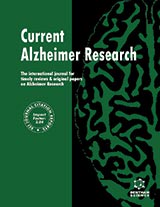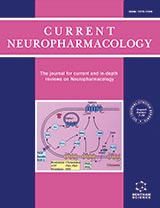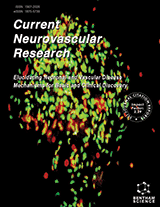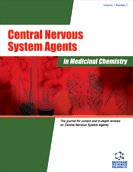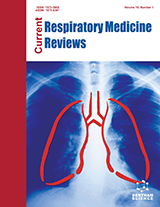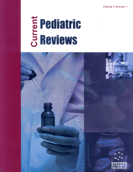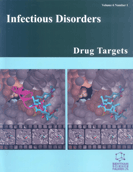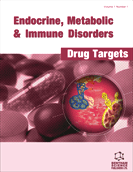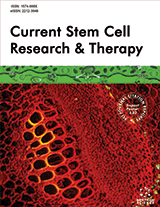摘要
目的:本研究的目的是探讨基因多态性之间的关联在节律基因与阿尔茨海默病(AD)和/或晚发性抑郁症(LOD)。阿尔茨海默病的病理导致昼夜节律紊乱,对生活质量有明显的负面影响。此外,有越来越多的证据表明,昼夜节律系统的监管机构对阿尔茨海默病和晚发性抑郁症病理。 设计主题:一个探索性的病例对照研究,旨在评估样本在PER2, PER3, CLOCK和 OX2R 基因上的SNPs。样本在由249 例阿尔茨海默病患者,222名晚发性抑郁症和112名健康人组成。 措施:参与者使用DSM-IV标准评价晚发性抑郁症, NINCDS-ADRDA评价阿尔茨海默病。 结果:等位基因分析,OX2R SNP和 rs2134294基因,显示与晚发性抑郁症的C等位基因(P = 0.02,或= 1.6)和阿尔茨海默病(P = 0.04,或= 1.5)的关联。rs2134294也表明基因型关联的C / C(P = 0.01)与对照组相比有高风险发展晚发性抑郁症,有2.7%少见比例。rs9370399(OX2R)也显示之间的等位基因(P = 0.03,或= 1.4)和阿尔茨海默病相关。这些结果不考虑考1000以后的置换试验。对于OX2R的其他标记和所有其他标志物基因研究没有发现关联关系。 结论:总之,本研究发现了生物钟基因(Per2,PER3,时钟和OX2R)基因多态性与晚发性抑郁症或阿尔茨海默病不相关。
关键词: 阿尔茨海默病(AD),时钟基因,晚发性抑郁(LOD),食欲素受体2(OX2R),期间(PER)的同源基因,单核苷酸多态性(SNP)
Current Alzheimer Research
Title:Lack of Association between Genetic Polymorphism of Circadian Genes (PER2, PER3, CLOCK and OX2R) with Late Onset Depression and Alzheimer's Disease in a Sample of a Brazilian Population (Circadian Genes, Late-Onset Depression and Alzheimer's Disease)
Volume: 13 Issue: 12
Author(s): Patricia Araújo Pereira, António Alvim-Soares, Maria Aparecida Camargos Bicalho, Edgar Nunes de Moraes, Leandro Malloy-Diniz and Jonas Jardim de Paula, Marco Aurélio Romano-Silva, Debora Marques Miranda
Affiliation:
关键词: 阿尔茨海默病(AD),时钟基因,晚发性抑郁(LOD),食欲素受体2(OX2R),期间(PER)的同源基因,单核苷酸多态性(SNP)
摘要: Objectives: This study aims to evaluate the association between polymorphisms in circadian genes and Alzheimer’s disease (AD) and/or late-onset depression (LOD). AD pathology leads to circadian disturbances, with clear negative influence on quality of life. In addition, there is an increasing evidence that regulators of circadian system have effects on AD and LOD pathology.
Design and Subjects: An exploratory case-control study designed to evaluate SNPs in the PER2, PER3, CLOCK and OX2R genes in a sample composed by 249 AD, 222 LOD and 112 healthy individuals.
Measures: The participants were evaluated using DSM-IV criteria for LOD and NINCDS-ADRDA for AD.
Results: In allelic analysis, the OX2R SNP, rs2134294, showed an association of allele C with LOD (p =0.02, OR= 1.6) and AD (p=0.04, OR =1.5). The rs2134294 also showed a genotypic association C/C (p =0.01) for higher risk to develop LOD compared to the control group, with an odd’s ratio of 2.7. The rs9370399 (OX2R) has also shown an association between A allele (p=0.03, OR= 1.4) and AD. These results do not persist after a 1,000 permutations test. For other markers of the OX2R gene and for all other markers of this study no association was found.
Conclusion: In conclusion, the present study found that the investigated Circadian Genes (PER2, PER3, CLOCK and OX2R) polymorphisms were not associated with LOD or AD.
Export Options
About this article
Cite this article as:
Patricia Araújo Pereira, António Alvim-Soares, Maria Aparecida Camargos Bicalho, Edgar Nunes de Moraes, Leandro Malloy-Diniz and Jonas Jardim de Paula, Marco Aurélio Romano-Silva, Debora Marques Miranda , Lack of Association between Genetic Polymorphism of Circadian Genes (PER2, PER3, CLOCK and OX2R) with Late Onset Depression and Alzheimer's Disease in a Sample of a Brazilian Population (Circadian Genes, Late-Onset Depression and Alzheimer's Disease), Current Alzheimer Research 2016; 13 (12) . https://dx.doi.org/10.2174/1567205013666160603005630
| DOI https://dx.doi.org/10.2174/1567205013666160603005630 |
Print ISSN 1567-2050 |
| Publisher Name Bentham Science Publisher |
Online ISSN 1875-5828 |
 43
43 4
4 1
1
- Author Guidelines
- Graphical Abstracts
- Fabricating and Stating False Information
- Research Misconduct
- Post Publication Discussions and Corrections
- Publishing Ethics and Rectitude
- Increase Visibility of Your Article
- Archiving Policies
- Peer Review Workflow
- Order Your Article Before Print
- Promote Your Article
- Manuscript Transfer Facility
- Editorial Policies
- Allegations from Whistleblowers
- Announcements
Related Articles
-
Multipotent, Permeable Drug ASS234 Inhibits Aβ Aggregation, Possesses Antioxidant Properties and Protects from Aβ-induced Apoptosis In Vitro
Current Alzheimer Research Tumour-Derived Glutamate: Linking Aberrant Cancer Cell Metabolism to Peripheral Sensory Pain Pathways
Current Neuropharmacology Targeting Epigenetics in Nervous System Disease
CNS & Neurological Disorders - Drug Targets Estrogen Receptors: Mechanism of Action and Relevance to Schizophrenia
Current Psychiatry Reviews Editorial (Thematic Issue: Current and Perspective Therapeutic Strategies for Alzheimer's Disease)
Current Pharmaceutical Design Multi-Target Inhibitors for Proteins Associated with Alzheimer: In Silico Discovery using Fragment-Based Descriptors
Current Alzheimer Research Issues of Quantitative Metabolic Brain Imaging with Small Animal PET in Mice
Current Medical Imaging Small-molecule Modulation of HDAC6 Activity: The Propitious Therapeutic Strategy to Vanquish Neurodegenerative Disorders
Current Medicinal Chemistry The Multiple Aspects of Stroke and Stem Cell Therapy
Current Molecular Medicine Design of Iodine-Lithium-α-Dextrin Liquid Crystal with Potent Antimicrobial and Anti-Inflammatory Properties
Current Pharmaceutical Design Highly Pure Phospholipids Based Brain Docosahexaenoic Acid Transporters
Recent Patents on CNS Drug Discovery (Discontinued) Amyloid Formation by Transthyretin: From Protein Stability to Protein Aggregation
Current Medicinal Chemistry - Immunology, Endocrine & Metabolic Agents Minocycline and Cytoprotection: Shedding New Light on a Shadowy Controversy
Current Drug Delivery Elevated Aβ42 in Aged, Non-demented Individuals with Cerebral Atherosclerosis
Current Alzheimer Research Transcranial Doppler: Target Thrombus and Augment Acute Stroke Treatment
Current Medical Imaging Neuroprotection by NMDA Receptor Antagonists in a Variety of Neuropathologies
Current Drug Targets Current and Future Therapeutic Strategies for Parkinsons Disease
Current Pharmaceutical Design Methods for Identifying Cardiovascular Agents: A Review
Recent Patents on Cardiovascular Drug Discovery Endothelial Dysfunction, Obesity and Insulin Resistance
Current Vascular Pharmacology subject Index To Volume 1
Current Drug Targets - CNS & Neurological Disorders


